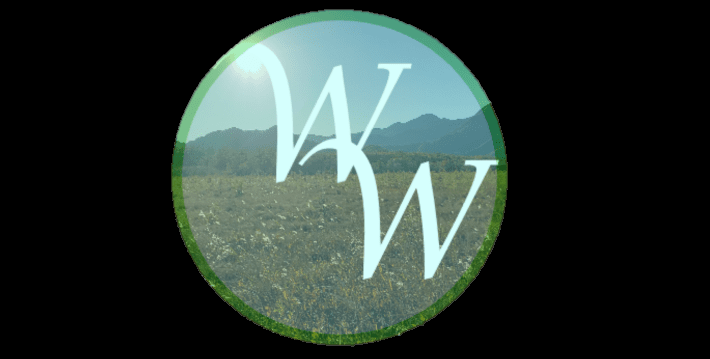Suiho-En: A Japanese Garden in L.A.
My summer thus far has been quite rewarding. I have had the pleasure of working with students from all around the world coming to Los Angeles, and sharing my love of language learning with them. That being said, this summer has also been extremely busy for me. During my time working for my latest employer, I have found very little time to myself, and it was beginning to take a toll. As much as I love teaching, I do need time to myself every now and then. Time to get away, time to clear my mind, time to center myself.
The other day, now having sufficient time to myself, I decided to take a small trip somewhere in L.A. I wanted to keep the trip short, while still being meaningful in a way. After some thought, I decided to visit one of the Japanese gardens in the area. Though I had visited many in Japan, I was curious as to how they would be translated in Los Angeles. In addition, I figured this would also offer me the tranquility and reflective atmosphere I had been lacking in the past weeks.
The garden I decided to visit is known as “The Japanese Garden: Suiho-en“, which translates to the Japanese garden of ‘water and fragrance’. It is located in Van Nuys, in the Sepulveda Basin. Though there are other Japanese gardens in the area, they are often only open on particular days of the week or month, while this one is open much more regularly.
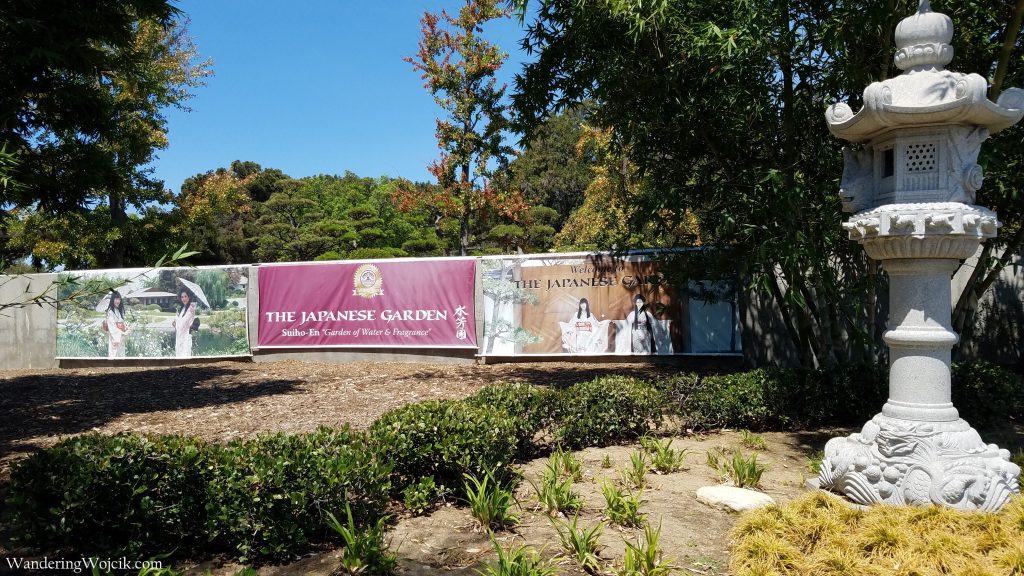
Parking my car, I headed to the gift shop to pay my $5 for admittance to the garden. The staff in the shop was exceedingly friendly, and made me feel very welcome during my short stay inside the establishment. I was given a booklet that detailed the garden, as well as a map. The booklet explained that the garden was created by Dr. Koichi Kawana, a man originally from Hokkaido who apparently created over a dozen Japanese gardens in the United States, including in San Diego, Denver, Chicago, and Minneapolis. To quote the booklet, “Dr. Kawana believed the Japanese garden should present natural forms creating tranquil beauty leading visitors to a calm, reflective communion with nature”.

Stepping foot into the garden, one of the first things that strikes me is how quite the area is. Of course this would make sense given the setting, but compared to other surrounding areas it caught me off guard. I proceeded into the grounds, keeping to the path as requested by the staff. The map provided proved to be quite useful, as it noted the names of all the foliage, as well as the landmarks in the garden.
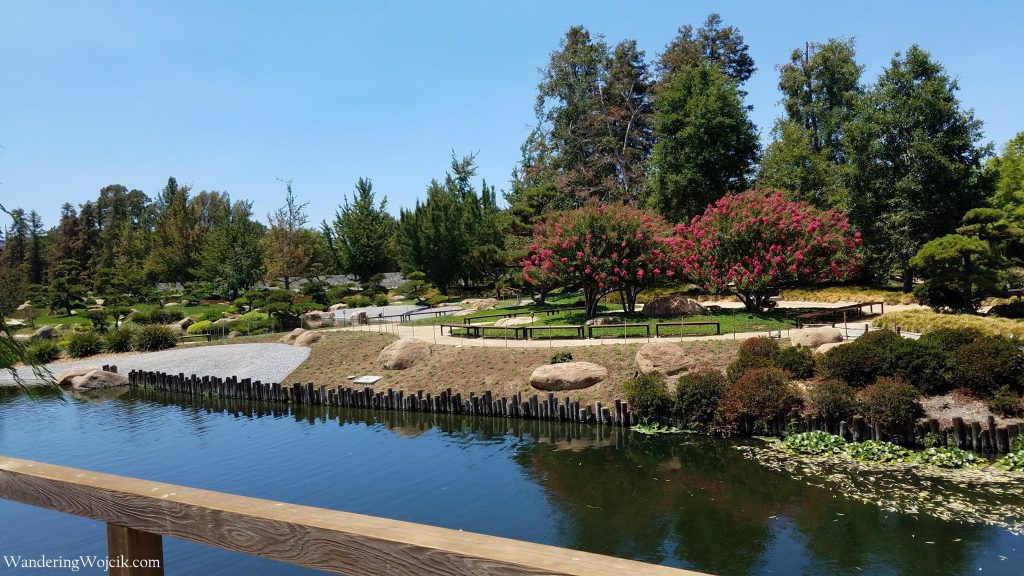
The garden offers a vivid array of colors, ranging from deep to bright greens, autumn like browns and reds, a well as accenting colors such as pink, with tans and greys bringing everything together. Water also plays a prominent role in the garden, with a large pond located in the middle. Several snow viewing lanterns are scattered around the garden as well, which I later found were a gift from Nagoya, Los Angeles’ Japanese sister city.

Walking along the trail, I came across a smaller pond towards the outer edge of the garden. The pond was filled with an array of lilies, many of them producing eye catching pink blooms. Nearby, a small group of blue dragonflies danced from leaf to leaf. Consulting my map, I found the area titled “Reflection Pond”. As the name suggested, I took a moment to admire the scenery and do some reflecting of my own.
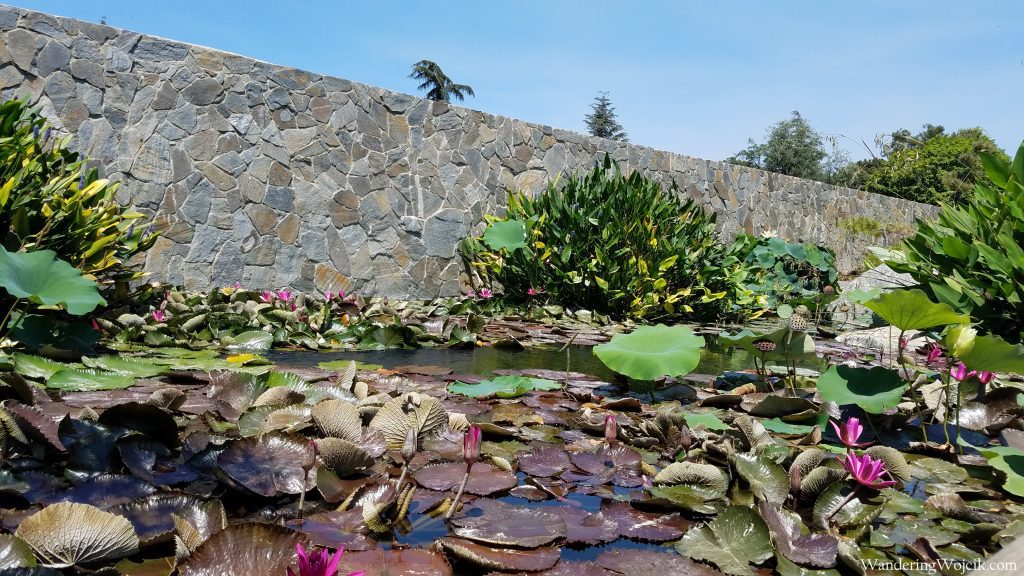
I walked from Reflection Pond into a bamboo grove, and emerged to find a humble residential dwelling. the building can be entered by guests, and even displays a Japanese tea house (which is off limits to the public, but can be viewed). Wishing to escape the heat, I entered and took a seat upon a bench facing the pond, taking in the view. It’s certainly a fine place to relax and clear one’s mind, especially during the summer when it’s particularly hot.

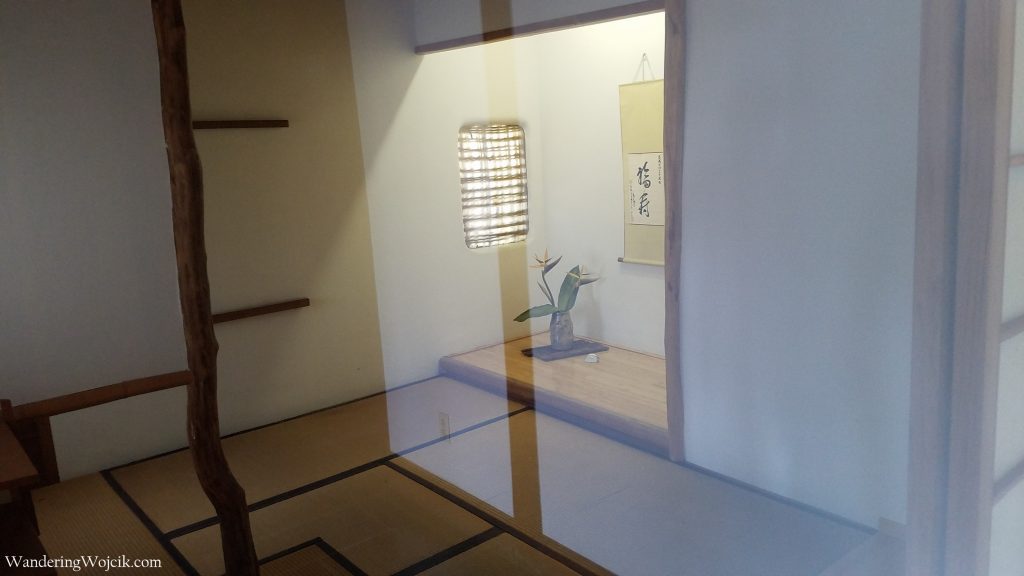
Exiting the building, walking past some palm trees and a waterfall, I saw a flock of cranes in the middle of the pond (my map appropriately calling it “Crane Island”). The booklet noted that Crane Island is a symbol of longevity and good fortune. Though there were many cranes at the base of the island, my attention was caught by a lone white crane, who took to perching himself towards the top, staring off into the distance.
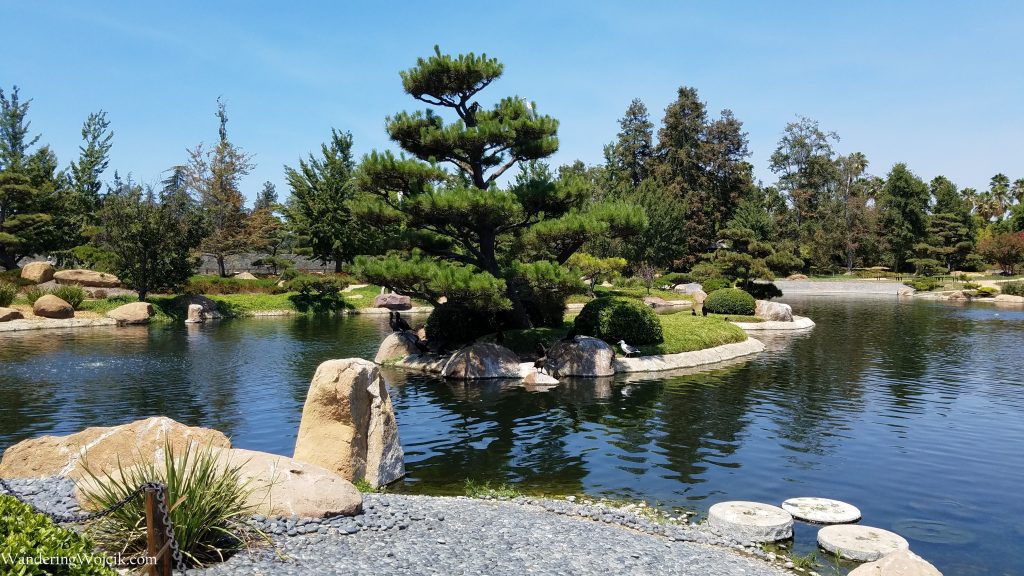
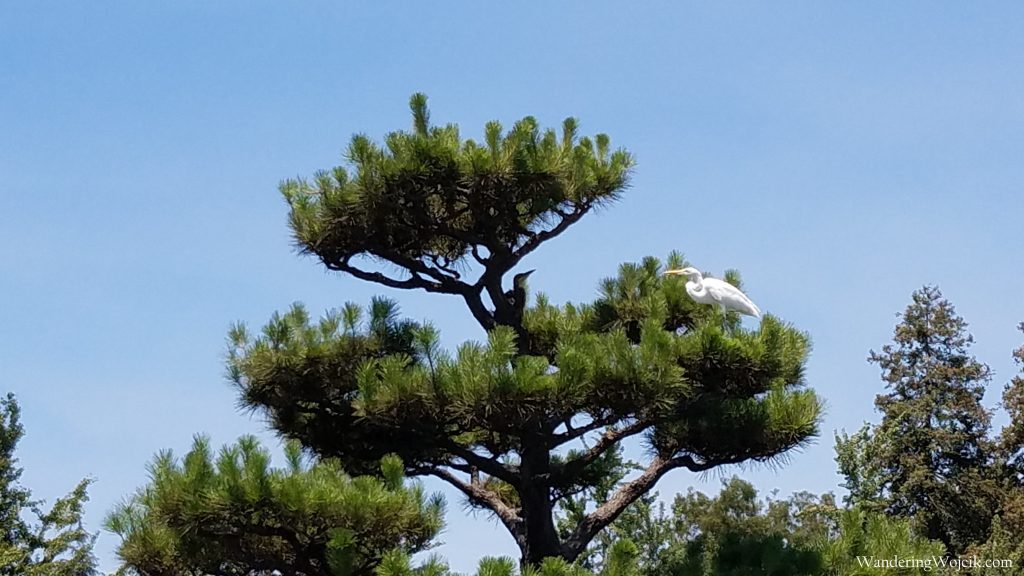
The path was nearing to an end, but not before I was lead to a flight of stairs that brought me to an elevated viewing area. From here, I could get a view of the entire grounds. I could see all of the areas I had just walked past. The ponds, waterfalls, bamboo, palm trees, each offering a different atmosphere, working together to create something truly beautiful.

When I had my fill, I descended the steps, and exited the garden. A nice little taste of Japan in L.A., and a much needed short get away. I wouldn’t mind returning here again with some friends to enjoy the scenery together.

